Syn.: Orchis rivini Gouan, Orchis cinerea Schrank, Straneuma militaris Salisb.
Family: Orchidaceae Juss.
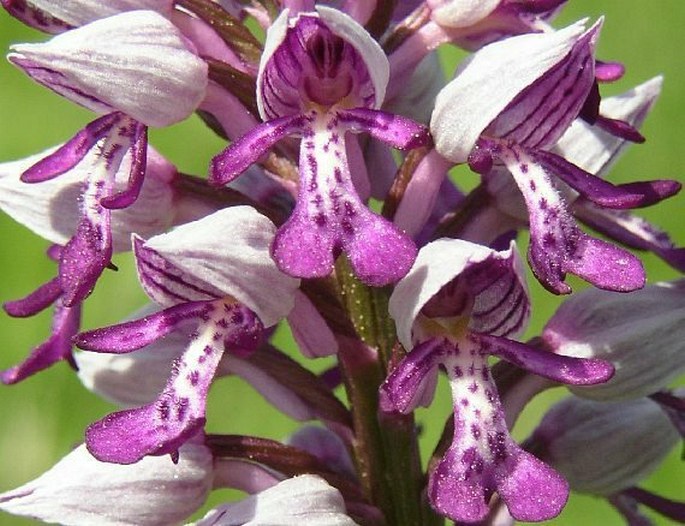
Distribution: Eurasian species, westward to Catalonia, England and Southern Scandinavia, eastward to Asia Minor, Caucasus and Siberia.
Ecology: Grows in sunny meadows, pastures, and forest borders, rare in wet meadows, on calcareous soils, from lowlands to foothills. Flowers from May to June.
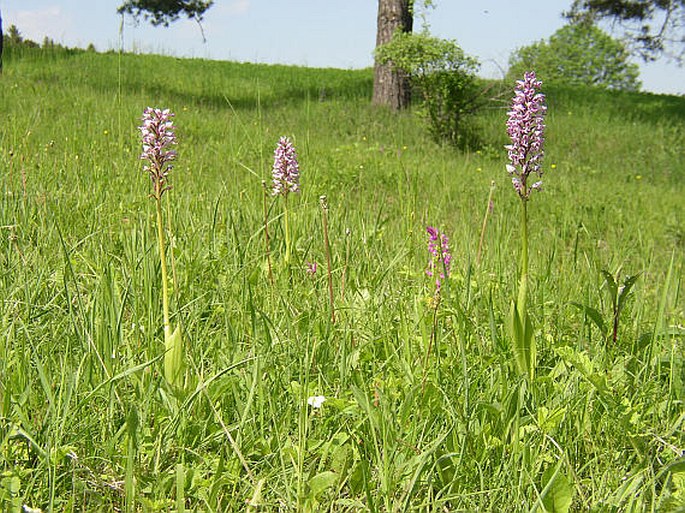
Description: Perennial herb with ovoid or ellipsoid tubers. Stem erect and unbranched, 20–65 cm tall, with 3–5 leaves near base, leaves oblong-lanceolate or -ovate, flat, up to 14 cm long. Spike conical at first, becoming cylindrical, up to 20 cm long; bracts ovate-lanceolate; perianth-segments convergent into a galea, outer 10–15 mm, ovate or ovate-lanceolate, pink, inner linear, galea whitish- or greyish-pink, with purple veins inside, labellum 12–15 mm, longer than wide, purple, white at the base, 3-lobed; lateral lobes linear, obtuse; middle lobe narrow, 2-lobed, the lobules ovate or oblong, rarely linear, with short teeth between, spur narrowly cylindrical. The fruit is a capsule. It is a very variable species.
Threat and protection: The Military Orchid is a protected plant in some countries (CZ, GB, SK). This species is simultaneously protected by Convention on International Trade in Endangered Species of Wild Fauna and Flora (CITES).
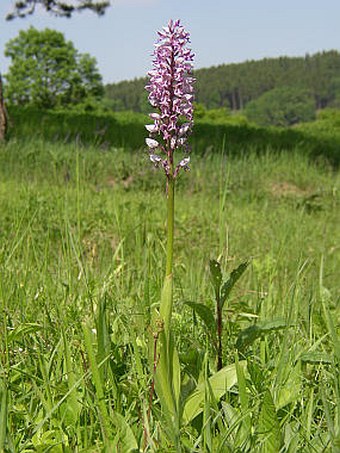
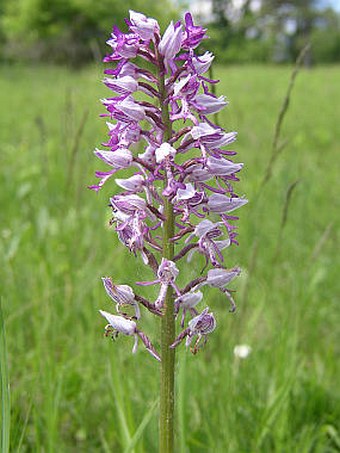

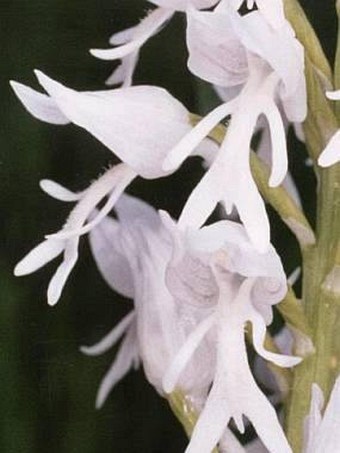
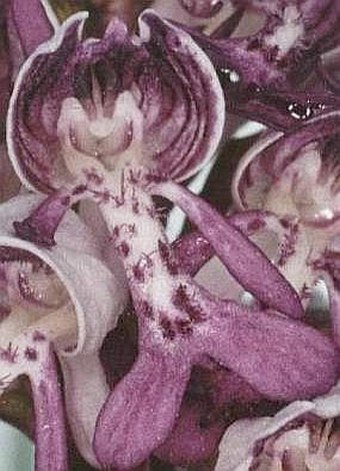
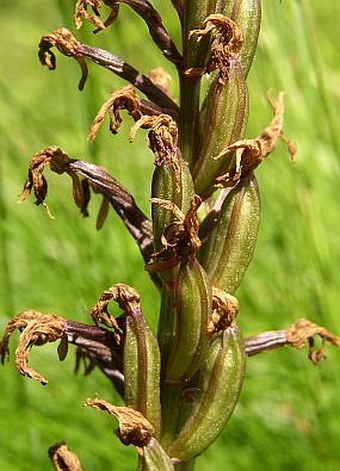
These images were taken in Czechia, Moravia, Strabišov-Oulehla (by Ladislav Hoskovec: 27. 5. and 30. 6. 2005), and Czechia, Bohemia, Mělnická Vrutice (by Lubomír Rak – white flowering form: 20. 5. 2004).


